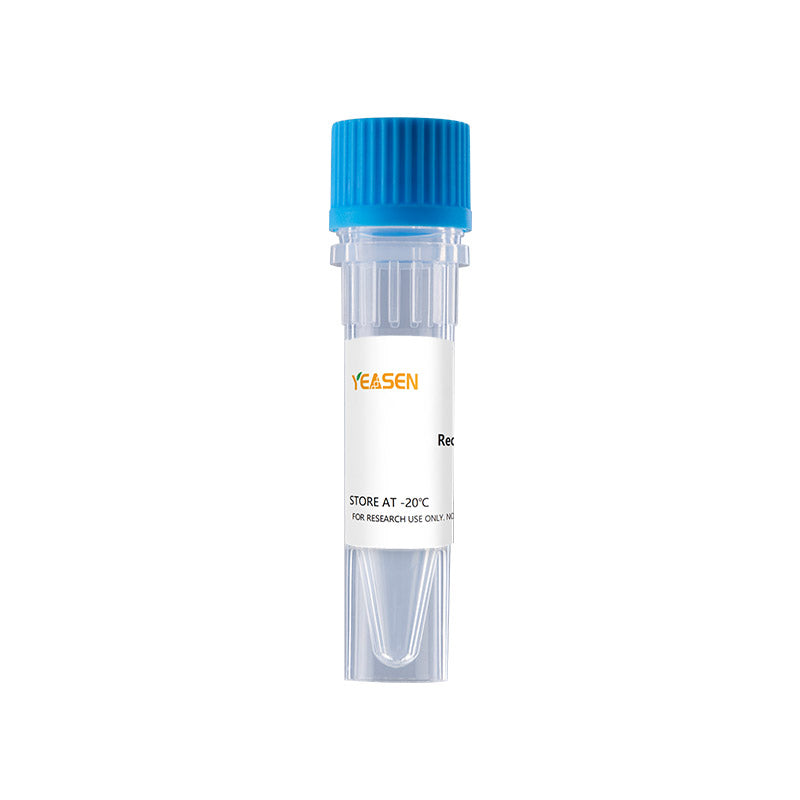Description
Melanoma Inhibiting Activity (MIA), also known as cartilage-derived retinoic acid-sensitive protein (CD-RAP), is an approximately 11-15 kDa protein that is secreted as a noncovalent homodimer and is structurally related to OTOR/Otoraplin and MIA-2. Mature human MIA contains a SH3 domain and shares 90% and 92% amino acid sequence identity with mouse and rat MIA, respectively. Alternative splicing generates a short isoform that lacks the SH3 domain. MIA is widely expressed in developing and regenerating cartilage and in the endothelium and parenchyma of developing lungs. MIA disrupts cellular interactions with the extracellular matrix by binding to Integrins alpha 4 beta 1 and alpha 5 beta 1. It competes with Fibronectin fragments for Integrin binding and interferes with Integrin signaling. It also functions as a chemoattractant for mesenchymal stem cells and enhances their BMP-2 and TGF-beta 3 induced differentiation into chondrocytes [tscheud]. MIA-deficient mice exhibit delayed chondrocyte differentiation but enhanced chondrocyte proliferation and cartilage repair. MIA is up-regulated in several cancers including malignant melanoma, lung adenoma, metastatic oral squamous cell carcinoma, neurofibromatosis type 1 (NF-1)-related tumors, and pancreatic cancer. It is selectively secreted and internalized from the trailing pole of migrating cells. This polarization reduces cellular attachment to the matrix at the trailing pole and contributes to directional tumor cell migration.
Product Properties
|
Synonyms |
CD-RAP |
|
Accession |
Q16674 |
|
GeneID |
8190 |
|
Source |
E.coli-derived Human MIA, Gly25-Gln31. |
|
Molecular Weight |
Approximately 12.1 kDa. |
|
AA Sequence |
GPMPKLADRK LCADQECSHP ISMAVALQDY MAPDCRFLTI HRGQVVYVFS KLKGRGRLFW GGSVQGDYYG DLAARLGYFP SSIVREDQTL KPGKVDVKTD KWDFYCQ |
|
Tag |
None |
|
Physical Appearance |
Sterile Filtered White lyophilized (freeze-dried) powder. |
|
Purity |
> 98 % by SDS-PAGE and HPLC analyses. |
|
Biological Activity |
The ED50 as determined by a cell proliferation assay using human A375 cell line is less than 5 μg/mL, corresponding to a specific activity of > 200 IU/mg. Fully biologically active when compared to standard. |
|
Endotoxin |
< 0.1 EU per 1μg of the protein by the LAL method. |
|
Formulation |
Lyophilized from a 0.2 µm filtered concentrated solution in PBS, pH 7.4, with 5 % Trehalose. |
|
Reconstitution |
We recommend that this vial be briefly centrifuged prior to opening to bring the contents to the bottom. Reconstitute in sterile distilled water or aqueous buffer containing 0.1% BSA to a concentration of 0.1-1.0 mg/mL. Stock solutions should be apportioned into working aliquots and stored at ≤ -20℃. Further dilutions should be made in appropriate buffered solutions. |
Shipping and Storage
The products are shipped with ice pack and can be stored at -20℃ to -80℃ for 1 year.
Recommend to aliquot the protein into smaller quantities when first used and avoid repeated freeze-thaw cycles.
Cautions
1. Avoid repeated freeze-thaw cycles.
2. For your safety and health, please wear lab coats and disposable gloves for operation.
3. For research use only!
Payment & Security
Your payment information is processed securely. We do not store credit card details nor have access to your credit card information.
Inquiry
You may also like
FAQ
The product is for research purposes only and is not intended for therapeutic or diagnostic use in humans or animals. Products and content are protected by patents, trademarks, and copyrights owned by Yeasen Biotechnology. Trademark symbols indicate the country of origin, not necessarily registration in all regions.
Certain applications may require additional third-party intellectual property rights.
Yeasen is dedicated to ethical science, believing our research should address critical questions while ensuring safety and ethical standards.

